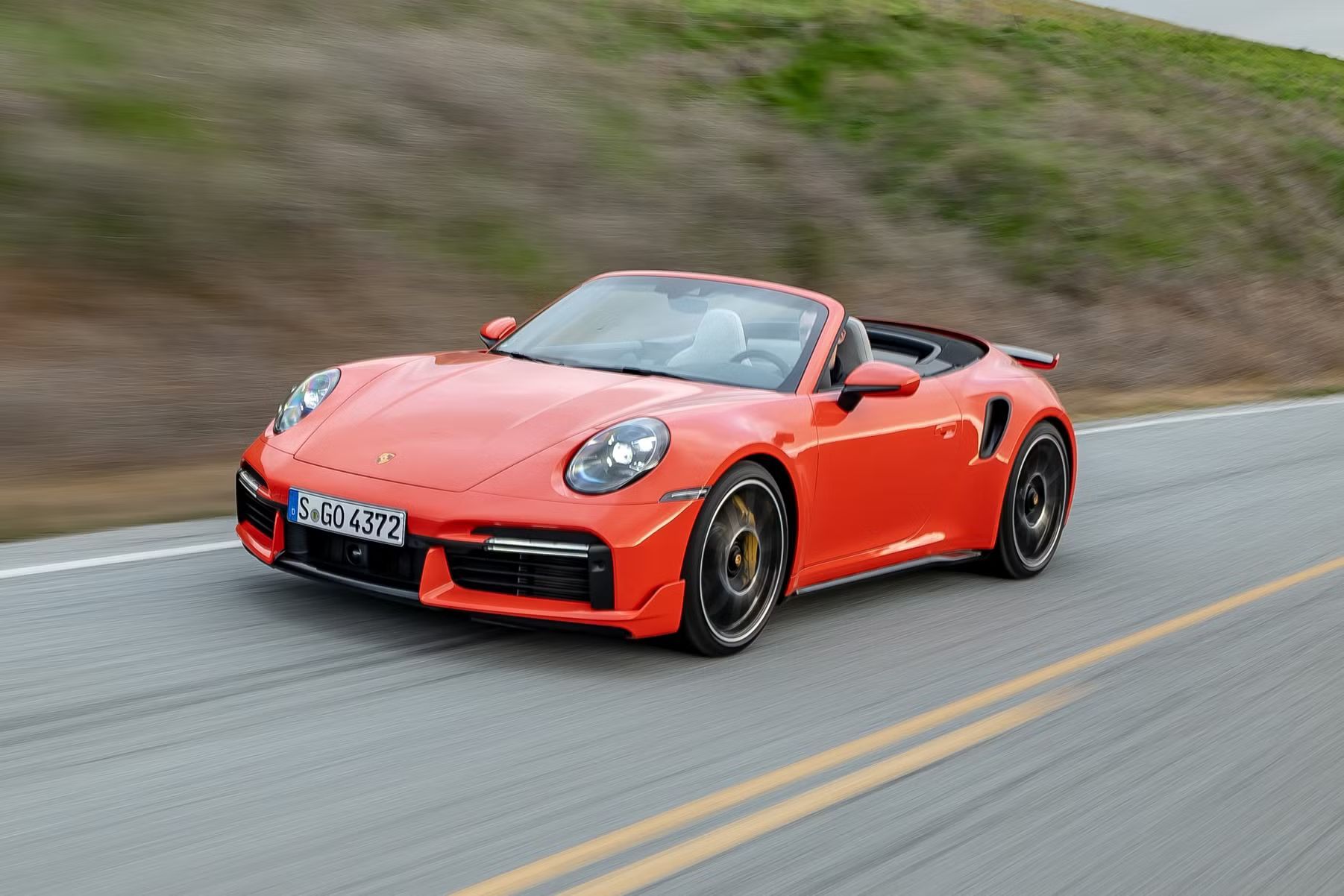Car shopping is more complex than it used to be, with consumers facing a multifaceted decision-making process that extends beyond mere price and desired features. Today’s buyers also need to determine what energy source they prefer to fuel their cars, a choice that significantly impacts long-term ownership. In a notable shift, more Americans than ever are opting to drive hybrid vehicles, indicating a growing confidence in this established technology.
Conventional hybrids captured nearly 12% of new-vehicle sales in the first quarter of 2025, marking their largest market share to date, an impressive increase of about 4% from early 2023. This surge in popularity sees hybrid vehicles continuing to outsell all-electric models, despite the significant attention and tax credits often directed towards electric vehicles. The upcoming expiration of a key tax incentive on September 30 further highlights the appeal of hybrids, which offer superior fuel economy without the prevalent concerns surrounding charging infrastructure.
This robust market performance naturally prompts a critical question for prospective car owners: Is 2025 truly the right time for you to buy a hybrid vehicle? As hybrid cars have successfully transitioned from niche alternatives to mainstream options, widely offered by major manufacturers like Toyota, Honda, and Ford, the landscape has evolved dramatically. We’re here to help you sort through the various pros and cons, ensuring you make an informed decision about integrating a hybrid into your lifestyle right now.
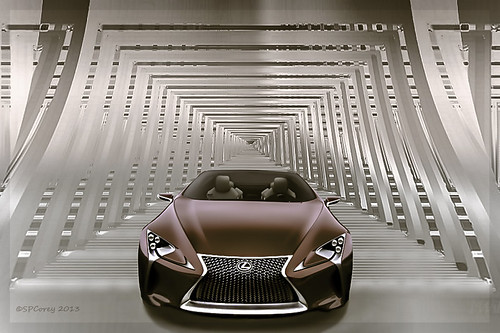
1. **The Enduring Appeal and Market Resurgence of Hybrids in 2025**Despite the significant global push for full electrification in the automotive sector, hybrid vehicle sales have remarkably outpaced those of electric vehicles in several key markets. This resurgence in popularity is attributed to a combination of compelling factors that resonate deeply with today’s consumers. Among these are the inherent affordability of many hybrid models, their superior fuel efficiency, and the undeniable convenience of not having to rely on dedicated charging infrastructure.
Hybrid cars continue to offer a practical and balanced solution for drivers who are actively seeking both improved fuel efficiency and substantial reductions in fuel costs. By intelligently combining a conventional internal combustion engine with an electric motor, hybrids deliver significant savings on fuel expenses over time. This financial advantage is particularly pertinent in 2025, a year where fluctuating fuel prices remain a major concern for a vast number of motorists.
Beyond the economic incentives, hybrids also present considerable environmental benefits that align with contemporary sustainability goals. By producing notably lower emissions and reducing their overall carbon footprint compared to gasoline-only vehicles, hybrids actively contribute to a cleaner and more sustainable environment. As consumers become increasingly environmentally conscious, these eco-friendly attributes position hybrids as an increasingly popular and responsible choice.
Ultimately, hybrids skillfully carve out a compelling middle ground between traditional gasoline vehicles and fully electric vehicles. With their capacity for better gas mileage and extended driving ranges, hybrids provide a highly convenient alternative for drivers who require flexibility in their daily commutes and are not yet ready for a complete transition to electric power. Their practical blend of benefits ensures their continued relevance and enduring appeal in the modern automotive landscape.
Read more about: Unveiling the Elite’s Automotive Desires: A Data-Driven Look at What High-Net-Worth Individuals Seek in Luxury Vehicles
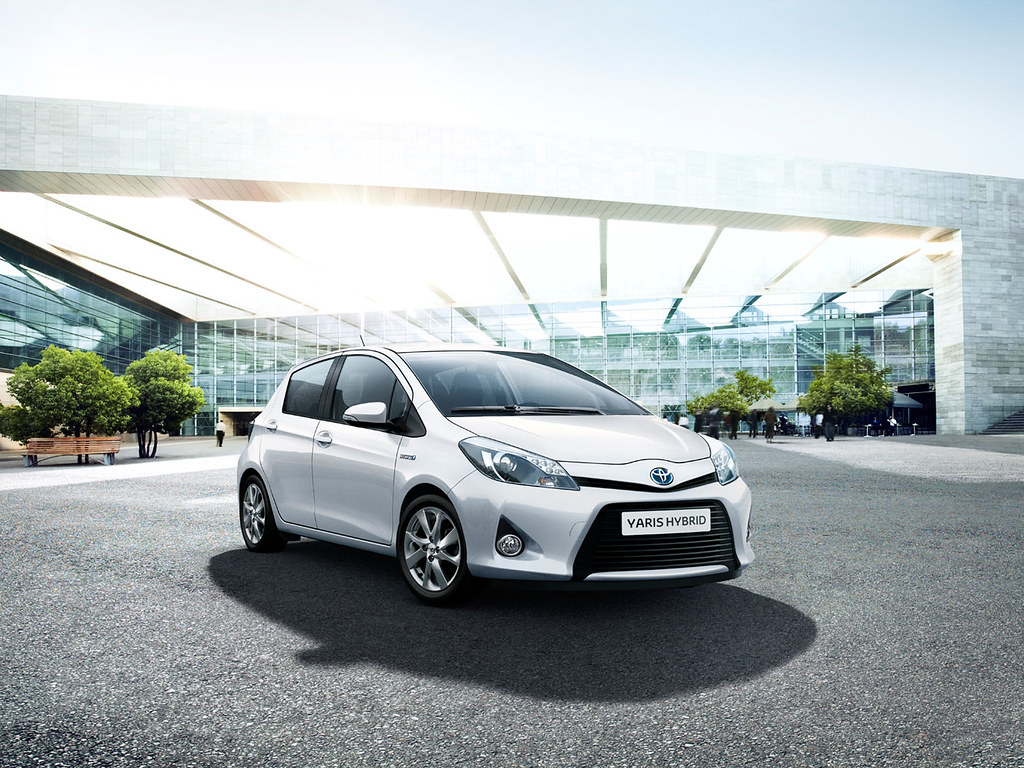
2. **The Proven Reliability of Hybrid Technology**For many consumers, car shopping is not a frequent activity; the average vehicle on American roads is nearly 13 years old, leading to a common perception that hybrid technology is relatively new. It is quite understandable that in the span of time since their last vehicle purchase, many shoppers may have lost track of the considerable advancements and developments within the auto industry. However, the reality of hybrid technology tells a different story entirely.
In fact, the first hybrids made their debut on the American market as far back as 2000, meaning that hybrid propulsion technology is now nearly a quarter of a century old. This extensive history underlines a period of rigorous development and refinement. Today, almost every major manufacturer offers at least one, and often multiple, hybrid models, reflecting their widespread integration and acceptance. The hybrids available on dealership lots today typically represent fourth- and fifth-generation technologies, showcasing years of iterative improvements.
Crucially, this long developmental arc means that current hybrids are easily as reliable as their gasoline-powered counterparts, and in many cases, exhibit superior durability. The core technology has been tried and thoroughly tested over two decades, achieving a level of maturity that inspires confidence. This established reliability is a significant factor for consumers weighing the longevity and dependability of their next vehicle.
Furthermore, the technology underpinning hybrid cars has seen significant advancements, leading to enhanced performance and improved fuel efficiency. Key breakthroughs in battery technology have been pivotal, resulting in more compact, lightweight, and efficient hybrid batteries. These innovations directly contribute to better fuel economy and further reductions in emissions, enhancing both the practical and environmental benefits of these vehicles.
The continuous evolution includes the development of more sophisticated powertrains and advanced regenerative braking systems, both of which play a crucial role in boosting fuel efficiency. These comprehensive advancements have solidified hybrid vehicles as a truly viable option for consumers who prioritize environmental responsibility and long-term cost-effectiveness. As stated by industry experts, “Hybrid cars have become a staple in the automotive industry, offering a practical solution for those seeking to reduce their carbon footprint without sacrificing performance.”
Read more about: Beyond the Conventional: A Deep Dive into Revolutionary Wheel Innovations and Future Mobility Solutions
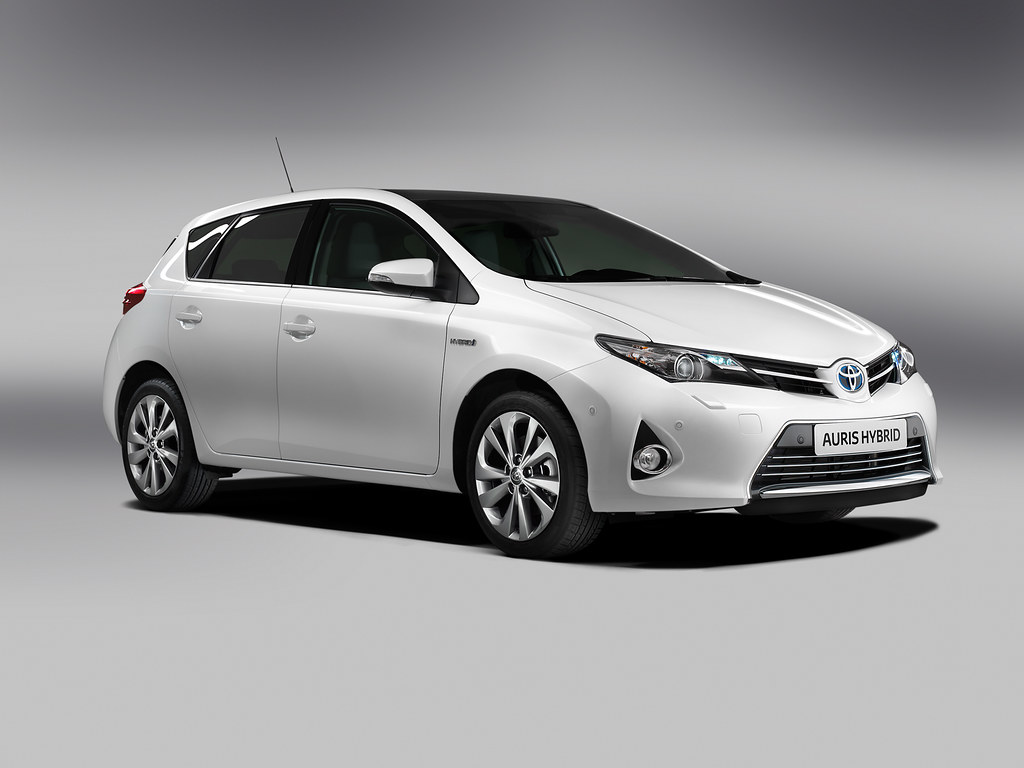
3. **The Abundant Selection of Hybrid Vehicles Today**One of the most compelling reasons to consider a hybrid in 2025 is the sheer breadth and depth of selection available in the market. Manufacturers worldwide have embraced hybrid technology, leading to a vibrant and diverse lineup that caters to virtually every taste and need. The current generation of hybrids, predominantly fourth- and fifth-generation technologies, reflects years of innovation and consumer-driven design, offering far more than the initial pioneering models.
For those in the market for midsize family vehicles, the choices are plentiful and appealing. The classic Toyota Prius, for instance, has undergone a significant aesthetic transformation and now boasts a much cooler look than its early iterations, while still delivering its renowned efficiency. Other highly regarded options include the Hyundai Sonata Hybrid and the ever-popular Toyota Camry Hybrid, both consistently earning strong reviews for their performance and practicality.
The expansion of hybrid offerings extends well beyond sedans into segments like minivans and SUVs, which are essential for many families. If you’re searching for a minivan, the Chrysler Pacifica Hybrid, a sophisticated plug-in hybrid electric vehicle (PHEV), receives strong reviews for its blend of space and efficiency. Similarly, the Toyota Sienna Hybrid maintains a stellar reputation for reliability and family-friendly features. In the small SUV category, consumers can choose from popular models such as the Ford Escape Hybrid, Honda CR-V Hybrid, and Toyota RAV4 Hybrid, among many others.
Beyond these mainstream categories, the hybrid landscape includes an even wider array of vehicles. The market now features hybrid midsize SUVs, robust hybrid pickups, and even luxurious hybrid cars from nearly every premium manufacturer. For enthusiasts seeking exhilarating performance, the physics-defying Porsche Panamera Hybrid ultra-luxury car offers a blistering zero-to-60 mph time of just over four seconds. For off-road adventurers, the Jeep Wrangler 4xe, officially a PHEV, provides a hybrid mode for eco-conscious exploration.
This extensive and ever-growing market truly offers a range of hybrid options designed to suit diverse needs and preferences. Whether you prioritize ultimate fuel efficiency, robust utility, or uncompromised luxury, the variety of configurations and fuel types available ensures that environmentally conscious and budget-savvy drivers have more choices than ever to find a hybrid vehicle that perfectly aligns with their specific requirements.
Read more about: The Road to 100,000+ Miles: Essential Lessons from Long-Term Single-Car Ownership
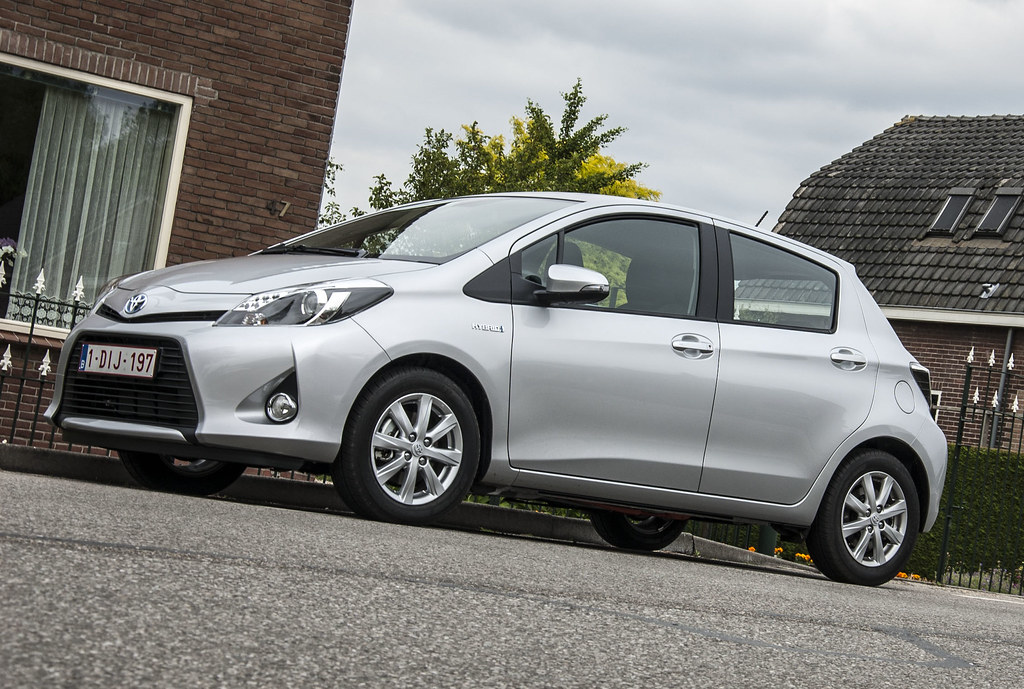
4. **The Robust Used Hybrid Market**While the allure of a brand-new vehicle is undeniable, a significant advantage of hybrid technology’s maturity is the emergence of a robust and appealing used hybrid market. This presents a fantastic opportunity not just for new-car buyers, but for those who prefer the value and cost savings that come with pre-owned vehicles. This segment of the market has become an increasingly viable option for a wide array of consumers.
For budget-conscious shoppers, the used hybrid market offers an excellent proposition. You can often acquire a pre-owned hybrid vehicle that is still under warranty, thereby mitigating some of the typical risks associated with buying a used car. This allows owners to enjoy the significant benefits of great gas mileage and reduced operating costs, all while sidestepping the initial depreciation hit that new vehicles experience. It’s a smart financial move for many.
Furthermore, the long-term value retention of hybrids, particularly models from well-regarded manufacturers like Toyota and Honda, is a notable advantage in the used car market. Historically, these brands’ hybrid vehicles have held their worth exceptionally well, a trend that is only bolstered by rising fuel prices. This strong resale value makes a used hybrid a sound investment, as it can command a respectable price when it comes time to sell or trade it in down the line.
Durability also plays a crucial role in the appeal of used hybrids. Thanks to their proven powertrain reliability and advanced engineering, many hybrid models are designed for extended lifespans. Additionally, regenerative braking systems, a common feature in hybrids, reduce wear and tear on traditional brake components, potentially leading to lower maintenance costs over time. With manageable maintenance costs, often covered under extended warranties, a used hybrid represents a practical and financially astute choice.
Read more about: Wheels of Fortune: Uncovering 15 Legendary Celebrity-Connected Cars That Revved Past a Million Dollars

5. **Understanding Hybrids vs. Plug-in Hybrids (PHEVs)**To navigate the diverse landscape of electrified vehicles effectively, it’s crucial to understand the fundamental distinctions between different types of hybrids. At their core, most conventional cars rely solely on a gasoline-powered engine to propel their wheels, while electric vehicles (EVs) utilize electric motors exclusively. Hybrids, representing a clever blend, ingeniously employ both gasoline engines and electric motors to optimize efficiency and performance.
A traditional hybrid, often referred to as a hybrid electric vehicle (HEV), operates by using its electric motor to achieve certain speeds, typically at lower velocities and during initial acceleration. Once a predetermined speed is surpassed, the gasoline engine seamlessly takes over the primary propulsion role. This intelligent interplay is precisely what grants HEVs significantly better gas mileage compared to their gasoline-only equivalents. These vehicles recharge their smaller batteries autonomously by capturing energy generated during braking, a process known as regenerative braking.
Stepping up in capability, plug-in hybrid electric vehicles (PHEVs) also integrate both a gasoline engine and an electric motor into their drivetrain. However, a key differentiator for PHEVs is their larger battery capacity, which enables them to travel at highway speeds on electric power alone for a substantial distance. Their gasoline engines typically engage only after the battery’s electric range has been depleted, usually after 20 to 30 miles of pure EV use. While PHEVs also benefit from regenerative braking for some battery replenishment, their defining feature is the ability to be plugged in to an external power source for charging, much like a full EV.
PHEVs generally command a higher price point than both traditional hybrids and conventional gas-powered vehicles, but they offer a compelling compromise. They effectively split the difference between gasoline cars and EVs, providing the best of both worlds for many drivers. For instance, a considerable number of Americans commute fewer than 25 miles a day, meaning a plug-in hybrid could handle their daily errands and commute entirely on electric power, mimicking the experience of owning an electric car, yet retaining the invaluable flexibility of a gasoline engine for longer trips without any range anxiety.
The broader hybrid car market further diversifies into categories such as parallel hybrids, which combine the engine and motor to optimize efficiency, and mild hybrids, which use electric assistance to augment engine power. Full hybrids, on the other hand, boast the capability to run solely on electric power at lower speeds for longer durations. Each type presents distinct benefits and trade-offs, making it essential for consumers to research and compare the features and capabilities to find the ideal match for their specific driving habits and needs.
Read more about: Unpacking the U-Turn: 14 Key Reasons EV Owners Are Considering a Switch Back to Internal Combustion
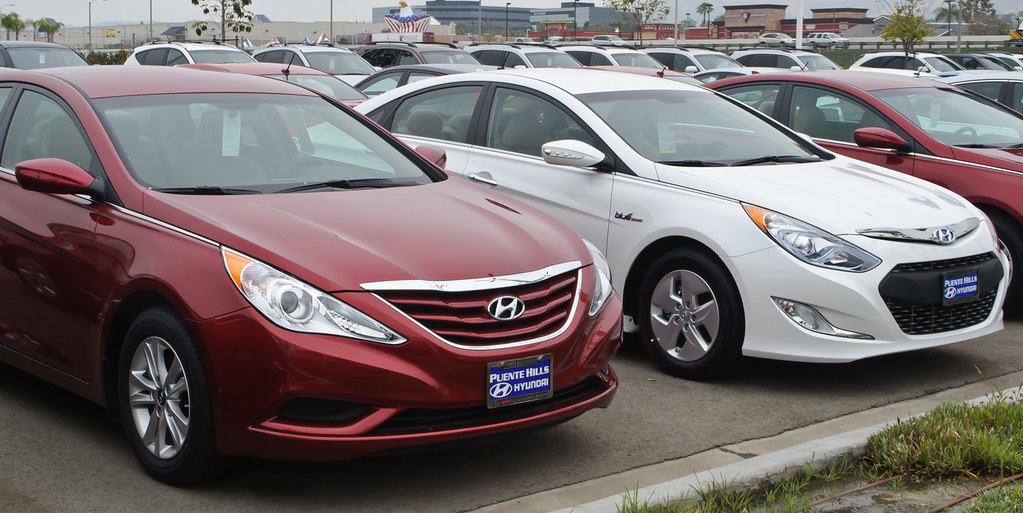
6. **The Industry’s Future Trajectory: Shifting Towards Full Electrification**While hybrid technology is well-established and incredibly effective, it’s important to acknowledge that it’s not the automotive industry’s ultimate destination. The long-term vision of the sector points firmly towards full electrification, a future where battery electric vehicles (BEVs) are the dominant mode of transportation. This ambitious transition has been articulated by numerous major automakers, with many setting aggressive targets for phasing out internal combustion engines.
Illustrating this forward momentum, brands like Jaguar have recently announced their complete transition to an all-electric lineup. Other automotive giants, such as General Motors, previously committed to a mostly electric fleet, retaining only a few gas-powered vehicles within a decade. However, this aggressive and ambitious push for an all-electric future is currently undergoing some recalibration. Mary Barra, the chief executive of GM, recently disclosed a strategic shift, indicating the company is pivoting away from its rapid EV rollout to instead focus on developing a new wave of plug-in hybrid electric vehicles (PHEVs). This adjustment reflects a recognition of current market realities and consumer preferences.
Several hurdles continue to slow down the widespread adoption of pure electric cars, with the most prominent being the need for robust and ubiquitous charging infrastructure. While charging networks are expanding rapidly in urban centers, they remain noticeably sparse in many rural areas, creating significant convenience barriers for potential EV owners outside metropolitan hubs. Despite these challenges, America continues its consideration of electric vehicles, which are on track to constitute approximately 8.5% of new car sales in 2025, demonstrating ongoing growth albeit slower than initially projected by some.
For consumers who prioritize being at the forefront of automotive technology, this industry trajectory is a significant consideration. If owning the latest cutting-edge vehicle is essential to you, the prospect of being left with a conventional hybrid when many neighbors are transitioning to electric or plug-in hybrid models might be a deterrent. The rapid pace of technological development means that what is cutting-edge today can quickly become commonplace tomorrow.
Nonetheless, for a substantial segment of buyers who face practical constraints such as a lack of reliable home charging options, or who frequently undertake long-distance travel, hybrids continue to offer an immediate and highly practical alternative. Their blend of fuel efficiency and conventional refueling convenience addresses many of the current adoption barriers associated with full EVs, ensuring their ongoing relevance in the evolving automotive landscape.
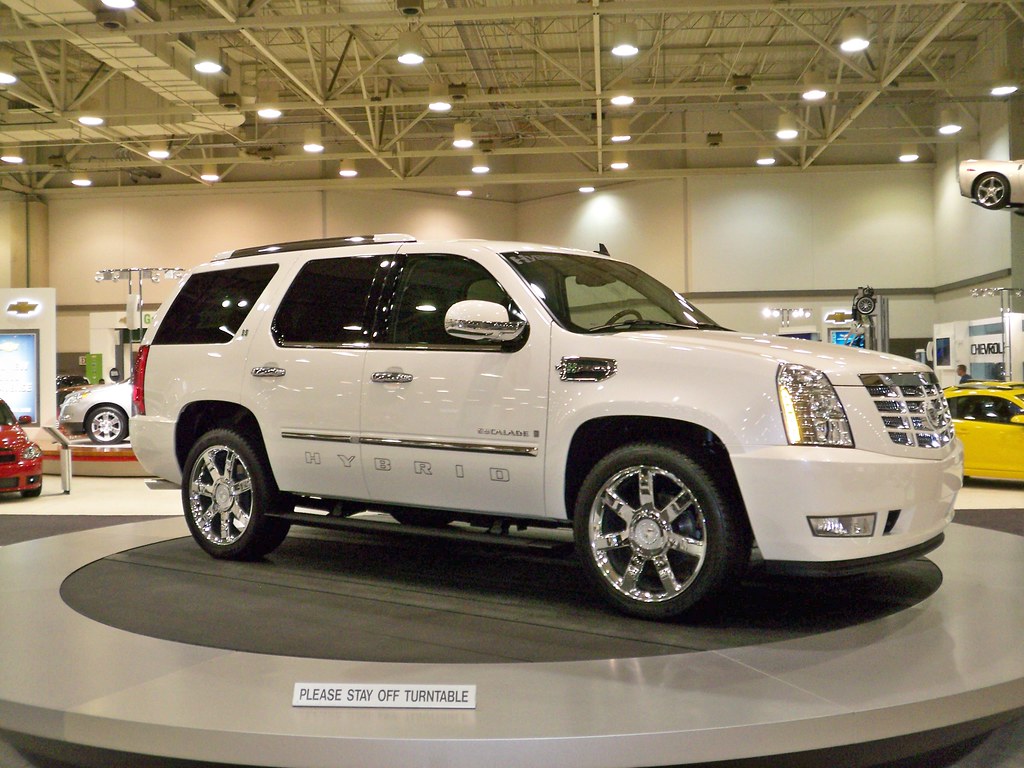
7. **The Reality of Car Affordability and High Costs**Before diving deep into the specifics of hybrid models, it’s imperative to address a broader, overarching consideration that impacts all car buyers in 2025: the significant and rising cost of purchasing any new vehicle. This financial reality has become an increasingly pressing concern for consumers, driven largely by higher interest rates and inflationary pressures. According to recent data from Cox Automotive, the average transaction price for a new car is now nearly $49,000, representing a substantial investment for most households.
The rising cost of borrowing money to finance a car purchase is a particularly impactful factor. While the Federal Reserve has held interest rates steady in 2025, following some cuts in 2024, loan rates generally remain relatively high. Lenders have passed on only minimal reductions to shoppers, and the most attractive financing offers are often restricted to specific promotional periods or reserved for buyers with top-tier credit scores. Prospective buyers are therefore advised to diligently compare lenders and closely monitor rate trends to secure the most favorable terms.
Despite the challenging financial landscape, there can be opportunities for astute buyers. Taking advantage of significant manufacturer discounts, special financing offers, or dealer incentives can potentially lower the overall cost of ownership and help get you into the driver’s seat of a hybrid sooner than anticipated. These promotions are worth seeking out as they can substantially alter the affordability equation for many popular models.
However, it’s also important to acknowledge one of the biggest hurdles specifically related to hybrid vehicles: their generally higher upfront purchase price compared to equivalent gasoline-powered models. This remains a significant challenge for many buyers. For instance, a 2025 Honda CR-V starts at approximately $31,495, whereas the hybrid variant of the same model, the 2025 Honda CR-V Hybrid, begins at a higher price of $36,045. This price premium requires careful consideration.
While the initial purchase price of a hybrid car might be higher, it’s crucial to evaluate this within a long-term financial perspective. The enhanced fuel efficiency and often lower maintenance costs (due to features like regenerative braking reducing wear on components) mean that the long-term cost savings can frequently offset this initial investment. This compromise between upfront expenditure and sustained financial benefits makes hybrids a remarkably attractive option for drivers who prioritize efficiency, practicality, and overall long-term value, even in a high-cost market.
Continuing our in-depth look at whether hybrid cars remain a smart investment in 2025, we now focus on critical comparisons with electric vehicles (EVs). Understanding how hybrids stack up against their fully electric counterparts, alongside a review of top-rated models, is essential for making an informed purchasing decision tailored to your unique driving needs. The diverse automotive landscape demands a clear understanding of each option’s nuances.
Read more about: Remember Them? 7 Early Hybrids Who Absolutely Proved It as Efficiency Leaders
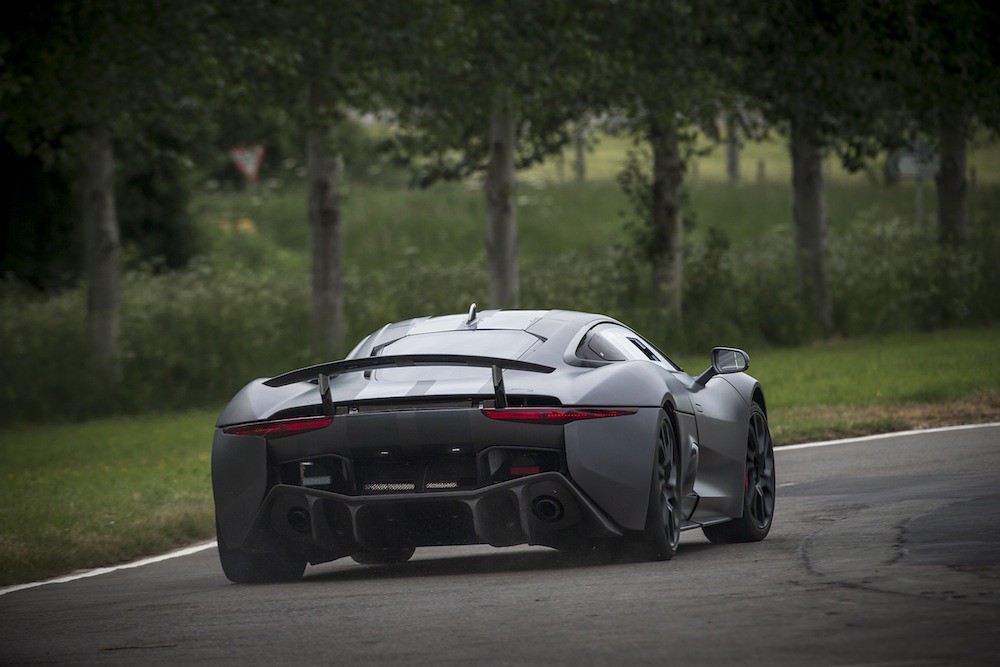
8. **Hybrid vs. EV: A Closer Look at Running Costs**When evaluating a hybrid or fully electric vehicle, running costs are a critical consideration beyond the initial purchase price. Hybrids offer superior fuel efficiency compared to conventional gasoline cars, leading to significant savings at the pump. For instance, the context indicates a Toyota RAV4 Hybrid costs around $1,115 in fuel for 13,500 km, while a Tesla Model Y (Electric) is about $680 in electricity for the same distance, showing a clear energy cost advantage for EVs.
Electric vehicles generally incur lower maintenance costs due to fewer moving parts in their drivetrain. This inherent simplicity means less wear and tear compared to a hybrid, which still includes a conventional engine. While hybrids benefit from regenerative braking, reducing brake wear, they retain complexities of an internal combustion engine, potentially leading to higher long-term maintenance needs than a pure EV.
For consumers, significant savings in ongoing operational expenses make the EV proposition attractive, particularly if utilizing off-peak charging rates or free workplace charging. Such scenarios could reduce the cost per 13,500 km to as low as $250. This demonstrates that while hybrids offer good fuel economy, EVs often provide a more substantial reduction in overall running costs, especially with strategic charging.
Car Model Information: 2021 Toyota RAV4 XLE
Name: Toyota RAV4
Caption: 2019 Toyota RAV4 LE AWD (AXAA54, US)
Manufacturer: Toyota
Aka: unbulleted list
Production: 1994–present
Class: Compact crossover SUV
Layout: unbulleted list
Categories: 2000s cars, 2010s cars, 2020s cars, All-wheel-drive vehicles, All Wikipedia articles written in British English
Summary: The Toyota RAV4 (Japanese: トヨタ・RAV4, Hepburn: Toyota Ravufō) is a compact crossover SUV produced by the Japanese automobile manufacturer Toyota. It is known for starting the wave of compact crossovers. The RAV4 is one of the best-selling SUVs of all time, having sold over 10 million units by February 2020. In February 2025, the RAV4 replaced the Ford F-150 as the top selling car in the United States, after nearly four decades of the F-150’s reign.
It made its debut in Japan and Europe in 1994, and in North America in 1995, being launched in January 1996. The vehicle was designed for consumers wanting a vehicle that had most of the benefits of SUVs, such as increased cargo room, higher visibility, and the option of full-time four-wheel drive, along with the maneuverability of a mid-size car. The vehicle’s name is an abbreviation of “Recreational Active Vehicle with 4-wheel drive”, or “Robust Accurate Vehicle with 4-wheel drive”, although not all models come equipped with the four-wheel drive system.
For the third-generation model, Toyota offered both short- and long-wheelbase versions of the RAV4. Short-wheelbase versions were sold in Japan and Europe; long-wheelbase versions in Australia and North America. Toyota of Japan also sold the longer-wheelbase version as the Toyota Vanguard (Japanese: トヨタ・ヴァンガード, Hepburn: Toyota Vangādo) at Toyopet Store dealership chain from 2005 through 2016. RAV4 for the Japanese market were sold at two different Toyota dealership chains, Corolla Store and Netz.
Get more information about: Toyota RAV4
Buying a high-performing used car >>>
Brand: Toyota Model: RAV4
Price: $25,963 Mileage: 50,231 mi.
Read more about: 14 Top New SUVs and Crossovers to Watch in 2025-2026: Your Guide to the Future of Driving
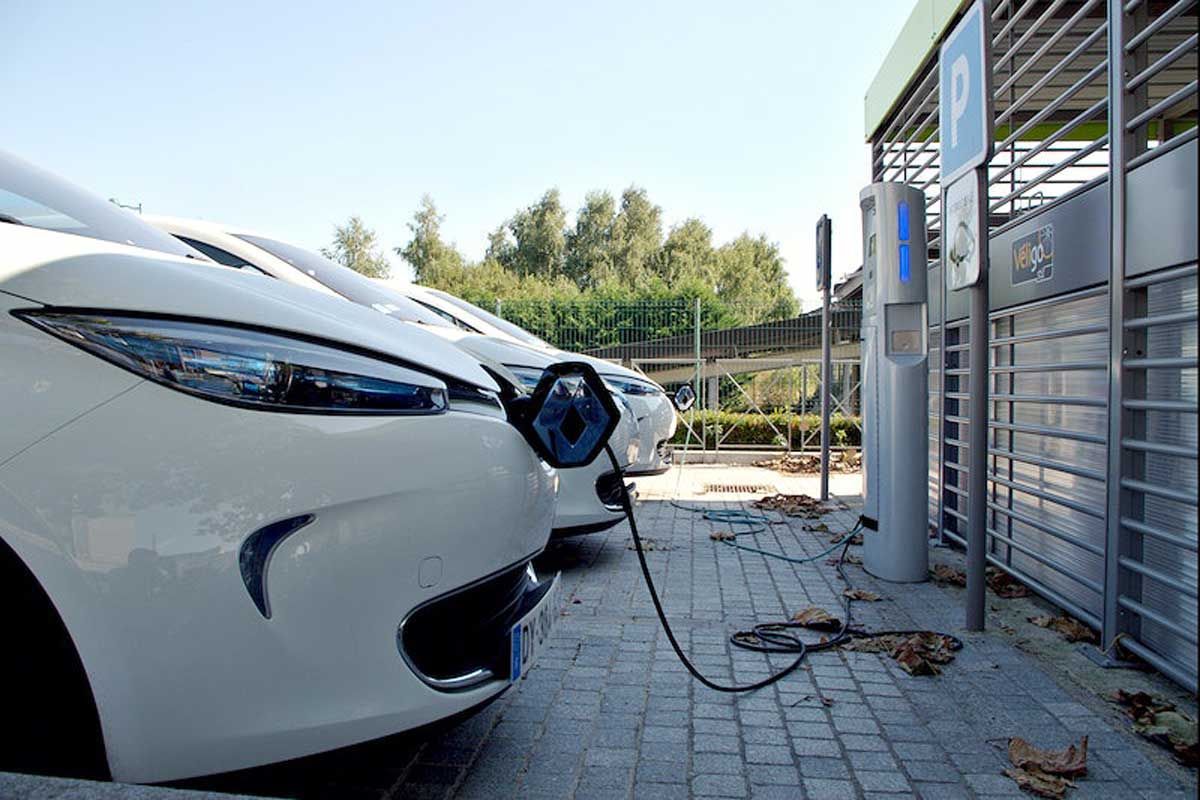
9. **Navigating the Charge: Infrastructure Realities for EVs and Hybrids**A significant distinction between hybrids and electric vehicles is reliance on charging infrastructure. Hybrids offer the familiar convenience of gasoline refueling, allowing drivers to fill up at any conventional gas station. This eliminates concerns about finding charging stations, particularly in less populated areas, making long-distance travel as straightforward as with a traditional vehicle.
For electric vehicles, availability and reliability of charging infrastructure remain a major consideration. While home charging is convenient for many EV owners, those without off-street parking face ongoing challenges, necessitating reliance on public charging networks. These may not always be accessible or consistently available, especially outside major urban centers, and fast charging stations can sometimes be expensive.
Ultimately, the choice often comes down to personal access to reliable charging. For buyers who lack consistent home or workplace charging options, or who frequently embark on long trips through areas with limited EV infrastructure, hybrids continue to offer a highly practical and stress-free alternative. Their ability to switch to gasoline power provides invaluable flexibility, eliminating ‘range anxiety’.
Read more about: Unpacking the U-Turn: 14 Key Reasons EV Owners Are Considering a Switch Back to Internal Combustion
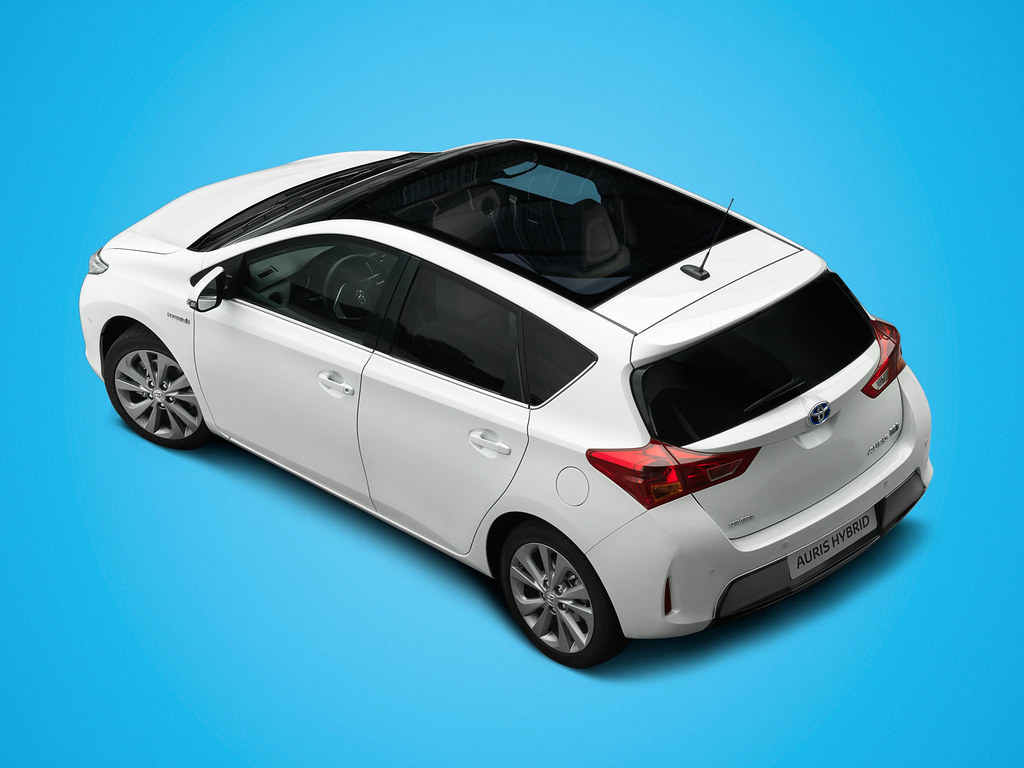
10. **Incentives Unpacked: Understanding Government Benefits for Electrified Vehicles**Government policies and incentives significantly shape purchasing decisions in the evolving automotive market, often designed to accelerate adoption of cleaner vehicle technologies. These financial encouragements vary between different categories of electrified vehicles, and understanding these distinctions is crucial for maximizing your next purchase value.
Currently, fully electric vehicles (EVs) and plug-in hybrid electric vehicles (PHEVs) are typically eligible for various substantial tax credits and fringe benefits tax (FBT) exemptions. These incentives can significantly reduce the effective purchase price, making them more financially appealing and sometimes even more cost-effective than a traditional hybrid over the long term, despite a potentially higher upfront MSRP.
In contrast, conventional hybrids generally do not receive the same level of direct financial incentives. Governments often prioritize full EVs and PHEVs for their greater potential in reducing tailpipe emissions. Therefore, prospective buyers should thoroughly research current local and national incentives, as these programs can dramatically alter the total cost of ownership, pushing some consumers towards a plug-in option.
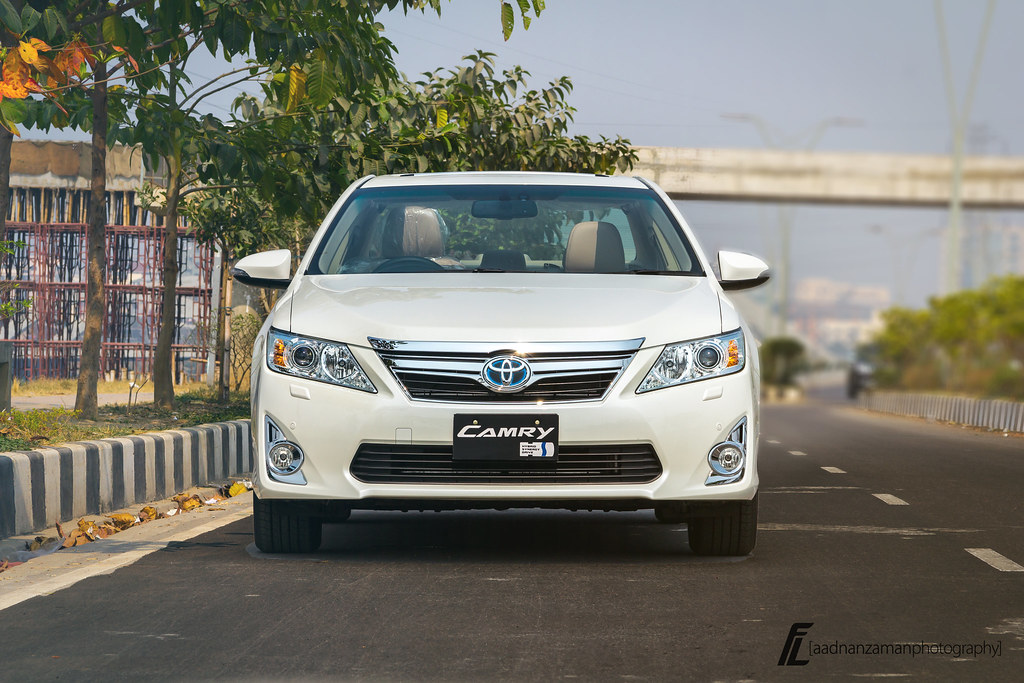
11. **Driving Range and Real-World Convenience: Hybrids vs. EVs**The practicality of driving range and overall convenience for daily life and occasional longer trips is paramount for new vehicle considerations. ‘Range anxiety,’ the fear of running out of power, remains a significant psychological barrier for some potential EV buyers, highlighting a key difference with hybrids.
Hybrids completely circumvent range anxiety due to their dual power source. As long as gasoline is available, a hybrid offers ‘unlimited’ range, much like a conventional gasoline car. This flexibility makes hybrids appealing for drivers who frequently undertake long-distance travel, live in areas with sparse charging infrastructure, or simply prefer peace of mind with traditional refueling.
For electric vehicles, range is battery-dependent, and while modern EVs boast impressive ranges, longer journeys require planning. However, for the average daily commute of approximately 33 km, most EVs only need charging about once every 10 days. This makes home charging incredibly convenient, eliminating gas station visits for routine driving, offering unparalleled ease for those with accessible charging points.
Read more about: Gearhead’s Grievances: 10 Performance Models Drivers Would Undo in a Heartbeat

12. **Best Hybrid Car for 2025: The Toyota Camry Hybrid**The 2025 Toyota Camry Hybrid continues to set the benchmark for midsize hybrid sedans, achieving an outstanding overall score of 9.6/10. With a starting MSRP of $28,700, it remains an accessible and highly practical choice, reinforcing Toyota’s long-standing leadership in hybrid technology.
Toyota has refined the Camry Hybrid, ensuring it blends familiar midsize sedan styling with subtle updates that enhance its presence, maintaining an aerodynamic profile and sleek LED headlights. Inside, high-quality materials, an intuitive infotainment system, and advanced driver-assistance features elevate the driving experience.
Its core strength lies in its hybrid powertrain: a 2.5-liter petrol engine paired with an electric motor produces a combined 208 horsepower while returning an impressive 51 mpg. This exceptional efficiency translates into substantial annual fuel savings, estimated at around $495, allowing buyers to potentially break even on the $2,280 price difference with the non-hybrid model in under five years. For consistent long-term value, the Camry Hybrid is an intelligent and financially sound investment.
Car Model Information: 2024 Buick Enclave Premium FWD
Name: Toyota Camry
Caption: 2018 Toyota Camry Ascent (ASV70, Australia)
Manufacturer: Toyota
Production: March 1982 – present
Aka: ubl
Class: ubl
Layout: ubl
Predecessor: ubl
Successor: Toyota Avensis (T250)
Categories: 1990s cars, 2000s cars, 2010s cars, 2020s cars, All-wheel-drive vehicles
Summary: The Toyota Camry (; Japanese: トヨタ・カムリ Toyota Kamuri) is an automobile sold internationally by the Japanese auto manufacturer Toyota since 1982, spanning multiple generations. Originally compact in size (narrow-body), the Camry has grown since the 1990s to fit the mid-size classification (wide-body)—although the two widths co-existed in that decade. Since the release of the wide-bodied versions, Camry has been extolled by Toyota as the firm’s second “world car” after the Corolla. As of 2022, the Camry is positioned above the Corolla and below the Avalon or Crown in several markets.
In Japan, the Camry was once exclusive to Toyota Corolla Store retail dealerships. Narrow-body cars also spawned a rebadged sibling in Japan, the Toyota Vista (トヨタ・ビスタ)—also introduced in 1982 and sold at Toyota Vista Store locations. Diesel fuel versions have previously retailed at Toyota Diesel Store. The Vista Ardeo was a wagon version of the Vista V50.
Get more information about: Toyota Camry
Buying a high-performing used car >>>
Brand: Toyota Model: Camry Hybrid
Price: $29,997 Mileage: 37,001 mi.
Read more about: Gearhead’s Grievances: 10 Performance Models Drivers Would Undo in a Heartbeat

13. **Luxury Hybrid Excellence: The 2025 Lexus NX Hybrid**For those who demand both premium refinement and eco-conscious efficiency, the 2025 Lexus NX Hybrid is a standout in the luxury hybrid segment. Boasting an overall score of 8.2/10 and starting at an MSRP of $46,600, it perfectly encapsulates Lexus’s commitment to sophisticated design, advanced technology, and responsible performance.
The Lexus NX Hybrid immediately impresses with its distinctive and elegant exterior styling, featuring the brand’s signature spindle grille. Meticulous craftsmanship extends to the interior, where high-quality materials, plush seating, and state-of-the-art infotainment systems create a luxurious and intuitively functional cabin, providing a serene environment for every journey.
Performance-wise, its advanced hybrid powertrain achieves a combined fuel economy of 39 mpg, an impressive figure for a luxury SUV of its caliber. This efficiency ensures drivers enjoy the premium Lexus experience while benefiting from reduced fuel consumption and a lower environmental footprint, aligning luxury with sustainability. The Lexus NX Hybrid is an ideal option for discerning buyers who prioritize both.
Car Model Information: 2024 Buick Enclave Premium FWD
Name: Lexus NX
Caption: 2023 Lexus NX 450h (AAZH26, US)
Manufacturer: Toyota
Production: August 2014 – present
ModelYears: 2015–present
Class: Compact executive car,crossover SUV
BodyStyle: SUV
Layout: unbulleted list
Categories: 2020s cars, All-wheel-drive vehicles, All Wikipedia articles written in American English, Articles containing Japanese-language text, Articles with short description
Summary: The Lexus NX (Japanese: レクサス・NX, Hepburn: Rekusasu NX) is a compact luxury crossover SUV sold by Lexus, a luxury division of Toyota. Introduced in late 2014, it is positioned between the subcompact UX and the mid-size RX in Lexus’ crossover SUV lineup.
According to Lexus, the name “NX” stands for “Nimble Crossover”.
Get more information about: Lexus NX
Buying a high-performing used car >>>
Brand: Lexus Model: NX Hybrid
Price: $29,997 Mileage: 37,001 mi.
Read more about: Unlocking Unbeatable Value: The 14 Best Used Car Deals for Savvy Buyers, Backed by Expert Analysis and Data
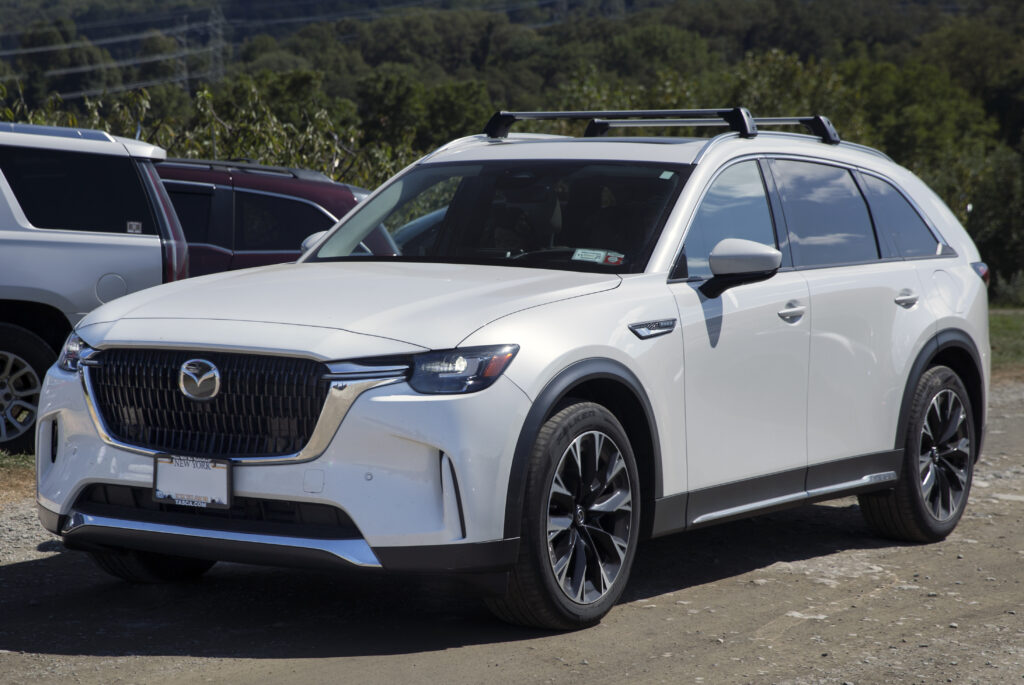
14. **The Best Plug-In Hybrid: Mazda CX-90 PHEV**Bridging the gap between conventional hybrids and pure electric vehicles, the 2025 Mazda CX-90 PHEV stands out as the best plug-in hybrid, earning an overall score of 9.1/10. With an MSRP starting at $49,945, this sophisticated SUV offers the flexibility of significant all-electric driving range combined with the peace of mind of a gasoline engine for longer journeys.
The CX-90 PHEV embodies Mazda’s refined design philosophy, featuring a premium exterior that exudes elegance and strength, matched by a meticulously crafted interior. High-quality materials, a well-thought-out layout, and advanced connectivity features create an upscale environment that comfortably accommodates families while offering an engaging and serene driving experience.
A key differentiator is its impressive electric range, capable of traveling 26 miles on electric power alone, allowing many daily commutes to be completed without consuming gasoline. Beyond its electric capabilities, the vehicle achieves a combined fuel economy of 25 mpg, offering commendable efficiency even when the gasoline engine is engaged. This makes it an exceptional choice for those desiring electric driving for daily use with extended-range flexibility.
Car Model Information: 2024 Buick Enclave Premium FWD
Name: Mazda CX-90
Caption: 2024 Mazda CX-90 in Deep Crystal Blue Mica
Manufacturer: Mazda
ModelCode: unbulleted list
Aka: Mazda CX-70 (two-row version)
Production: unbulleted list
ModelYears: unbulleted list
Assembly: Hōfu
Class: Full-size car,crossover SUV
BodyStyle: Sport utility vehicle
Layout: Front-engine, four-wheel-drive layout
Platform: Skyactiv#Large Product Group
Related: unbulleted list
Engine: Unbulleted list
Motor: unbulleted list
Powerout: unbulleted list
Drivetrain: unbulleted list
Transmission: Skyactiv#Skyactiv-Drive,Automatic transmission
Battery: unbulleted list
ElectricRange: cvt
Wheelbase: cvt
Length: cvt
Width: cvt
Height: cvt
Weight: cvt
Predecessor: Mazda CX-9
Sp: us
Categories: All-wheel-drive vehicles, All Wikipedia articles written in American English, Articles with short description, CS1 Hebrew-language sources (he), CS1 Mexican Spanish-language sources (es-mx)
Summary: The Mazda CX-90 is a full-size crossover SUV with three-row seating produced by Mazda, introduced in 2023. A two-row version, marketed separately as the Mazda CX-70, was introduced in 2024, featuring the same dimensions and engine options with minor styling variations. It is the largest SUV produced by the company and is built on the Large Product Group platform, which features a longitudinal engine and rear-biased all-wheel-drive system shared with the smaller CX-60.
The CX-90 replaced the CX-9 in North America, and like its predecessor, it is not marketed in Japan or Europe, despite being manufactured in Japan. Engine options include turbocharged, mild hybrid, inline-six engines (gasoline or diesel) and a plug-in hybrid gasoline inline-four. All powertrains are paired with an eight-speed automatic transmission that uses a wet clutch in place of a conventional torque converter.
Get more information about: Mazda CX-90
Buying a high-performing used car >>>
Brand: Mazda Model: CX-90 PHEV
Price: $29,997 Mileage: 37,001 mi.
Read more about: The Quest for Calm: Unveiling the Top 15 Quietest Midsize SUVs of 2024 for a Serene Drive
As we’ve journeyed through the multifaceted world of hybrid vehicles in 2025, it’s clear that the automotive landscape offers more options than ever, tailored to diverse needs and priorities. From the enduring appeal of traditional hybrids to the sophisticated capabilities of plug-in models and the rapid advancements in electric vehicles, consumers are truly at a crossroads of innovation. The decision isn’t merely about choosing a car, but about embracing a mobility solution that aligns with your lifestyle, budget, and environmental consciousness. Whether you prioritize immediate affordability, the convenience of conventional refueling, the longest possible electric range, or specific government incentives, the insights we’ve explored should equip you to confidently navigate the market. Ultimately, the best vehicle for you in 2025 is the one that perfectly marries performance, practicality, and personal values, propelling you forward into a cleaner, more efficient driving future.

